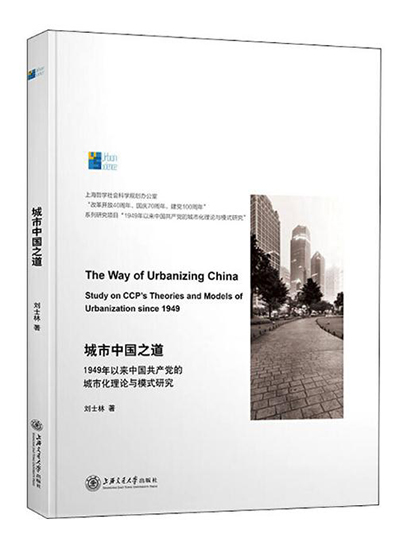
The Way of Urbanizing China—Study on CPC’s Theories and Models of Urbanization Since 1949
The Way of Urbanizing China—Study on CPC’s Theories and Models of Urbanization Since 1949, authored by Liu Shilin, director of the Institute for Urban Studies at Shanghai Jiao Tong University, elaborates on a series of both theoretical and practical issues concerning China’s urbanization. These issues range from thoughts on urbanization from the Communist Party of China (CPC), the construction of urban development models since the founding of the PRC in 1949, China’s metropolitanization process and construction of city clusters since reform and opening up, the model innovation of developing distinctive cultural cities, urbanization with Chinese characteristics and corresponding challenges, and the basic category of China’s urbanization process.
The book first examines the risks and benefits of China’s urbanization models. Then, considering the need to establish new development concepts and transform economic development modes, the author points out the most prominent feature of the cultural urbanization development model—a city’s cultural forms and spiritual functions can serve as the main force and core mechanism driving urban development.
Liu believes that “a cultural city can best demonstrate the new height of human civilization’s development, taking into account both traditions and the future, and politics and economy. It is a scientific and comprehensive development model most suitable for the needs of subjects and for the nature of cities.” The construction of a cultural city does not exclude its political and economic functions. Instead, cultural development becomes the theme which optimizes various urban factors, ultimately advancing the sustainable development of the city.
Urban studies have taken on different appearances amid changing times, with diverse approaches and perspectives in the domain. Urban studies currently enjoy multiple mature methods, including urban sociology, urban history, and urban anthropology. In addition, urban cultural studies have had irreplaceable functionality in recent years, and this book is a work in this field.
The book provides a panoramic view of theories and practices which relate to China’s urbanization paths since 1949, specifically including longitudinal studies of modern and contemporary urban thought, comparative studies of urbanization paths between China and Europe and the United States, and interdisciplinary research that interprets macro issues through economics, sociology, cultural studies, and geography.
With the help of specific data, Liu also conducts case studies on the Guangxi Beibu Gulf Economic Zone, the Central Plains Economic Zone, Shanghai, and the Xiong’an New Area. This helps absorb the successful experience and beneficial practices of regional urbanization on a micro level, while grasping the theoretical contexts and practical trends of China’s urbanization on a macro level.
Liu Jinxiang is from the School of Marxism at Harbin Institute of Technology.
Edited by YANG LANLAN


 PRINT
PRINT CLOSE
CLOSE